by Daniel Henry
Normally it depends on the tire and the damage. If the damage is not severe then you can drive 50 miles safely. However, if it is severe then it should be fixed immediately.
A broken tire belt is a very common problem and it happens very often. There are many reasons which can cause damage to a tire belt. Whatever the damage may be, I would not advise anyone to drive on a broken tire belt as it can damage the whole body of the wheel. It can eventually shatter the rim and cause a major accident.
Sometimes you cannot avoid
driving with a broken tire belt. It raises the question- is it safe to drive on a broken tire belt? Being someone experienced in this field, I will try to share my understanding regarding this alongside the other details about tire belts. So, let’s shed some light on the matter.
Table of Contents
Components OF A Tire BeltYou might often wonder what a tire belt is made of.
A tire belt is like a steel jacket of a tire. It is the steel structure that provides the tread with stability and strength which increases the integrity of the wheel. This is the reason why the tire belt is one of the most essential parts of a tire. The tire belt is situated under the tread of a tire coated with rubber.
A tire belt has three layers of protection:
You can know more about the infrastructure of a tire and tire belt here.
Necessity Of A Tire BeltA tire belt is the bodyguard of a tire. It provides strength for the tread of a tire.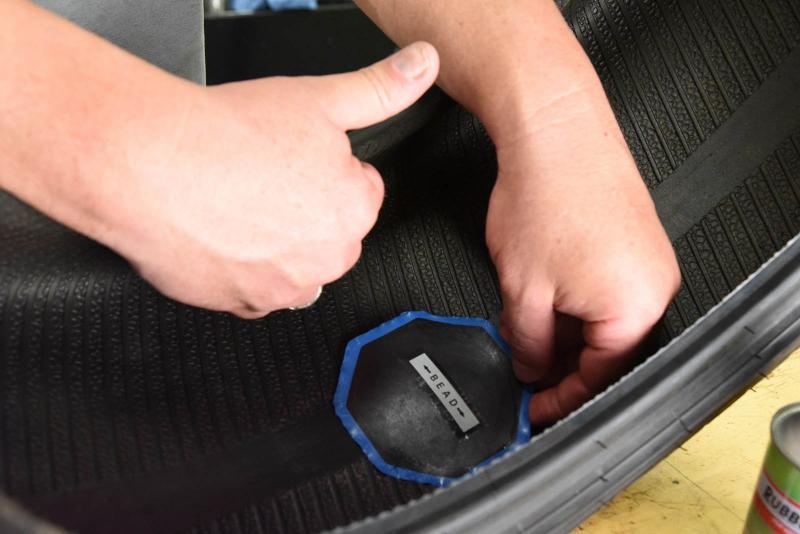 A tire belt makes the tire strong to handle the rough and tough roads. Hence, a strong tire belt makes the tire last longer and better. Even if you have an expensive tire, a faulty tire belt can ruin all the money you have expended on it. So, your tire needs to have a
tire belt in proper condition.
A tire belt makes the tire strong to handle the rough and tough roads. Hence, a strong tire belt makes the tire last longer and better. Even if you have an expensive tire, a faulty tire belt can ruin all the money you have expended on it. So, your tire needs to have a
tire belt in proper condition.
The Number Of Tire Belts Used In Different Vehicles:
The number of tire belts on your tire depends on the vehicle and tire you are using. Not every vehicle uses the same number of tire belts. Let’s have a glance at the number of tire belts in different vehicles-
| SL | Vehicle Type | Number Of Belts |
|---|---|---|
| 1. | Passenger Car | 02 |
| 2. | Medium Truck | 04 |
3.
| Bus | 04 |
| 4. | Heavy Vehicle | 08 |
The number of tire belts gets doubled in case of heavy vehicles. The heavier the vehicle, the more the belts.
Relevant articles: Is Tire Rubbing Bad: How Much Tire Rub Is Too Much?
What Causes The Damage Of A Tire Belt?Although a tire belt is made of steel and very strong part of a tire, it can get damaged for some reasons.
The main culprits which cause damage to a tire belt are-
These things can tear apart the tire belt into pieces and make bumps in the tire which will eventually change the shape of the tire. Every time, as an auto technician, I receive calls about a broken tire belt- I find one of these reasons responsible for it. So now you know where you have to keep an eye to avoid this mess of broken tire belts.
Every time, as an auto technician, I receive calls about a broken tire belt- I find one of these reasons responsible for it. So now you know where you have to keep an eye to avoid this mess of broken tire belts.
Driving on a broken tire belt not only hampers the tire but also damages other parts of a vehicle severely.
The components of a vehicle that can be damaged by driving on a broken tire belt are-
These components of a vehicle get severely damaged when you drive on a broken tire belt.
How Do You Know If A Tire Belt Is Broken?Let me tell you how you know about a broken tire belt.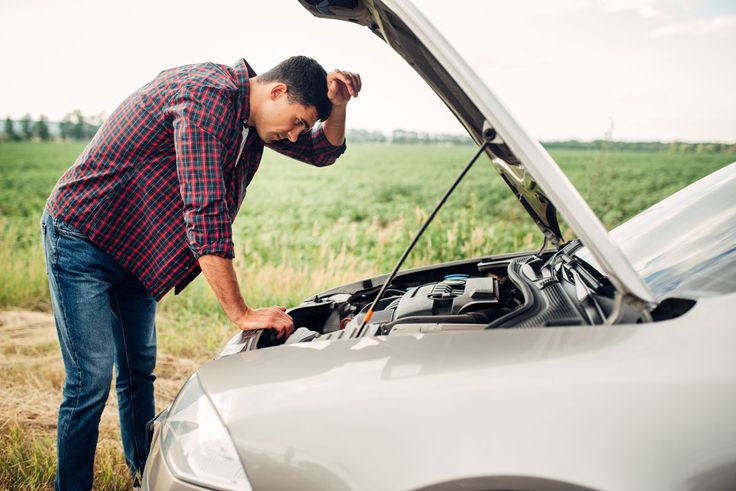 This is no rocket science. You can simply understand it by looking at the shape of the tire. When a tire belt is broken- it breaks into small pieces which change the shape of your tire.
This is no rocket science. You can simply understand it by looking at the shape of the tire. When a tire belt is broken- it breaks into small pieces which change the shape of your tire.
So, if the tire’s shape looks unusual or changed and you are experiencing a shaky and unstable journey, then your tire belt is broken for sure. You can get a video tutorial of it here.
people also ask (FAQs)1. How To Fix A Broken Tire Belt?The answer is very simple. You can not fix a broken tire belt. If your tire belt is broken you have to simply buy a new tire. There is no way to fix a broken tire.
2. Do Tire Warranties Cover A Broken Tire Belt?Yes, it does! A broken tire belt is covered under a tire warranty. Not only a broken tire but also anything and everything which hampers the tire and makes it ineffective is covered under tire warranties.
3. What Does A Broken Tire Belt Sound Like?Apart from the visible symptoms which will show that the vehicle’s tire belt is broken, there will be a pounding thumping noise while driving the vehicle.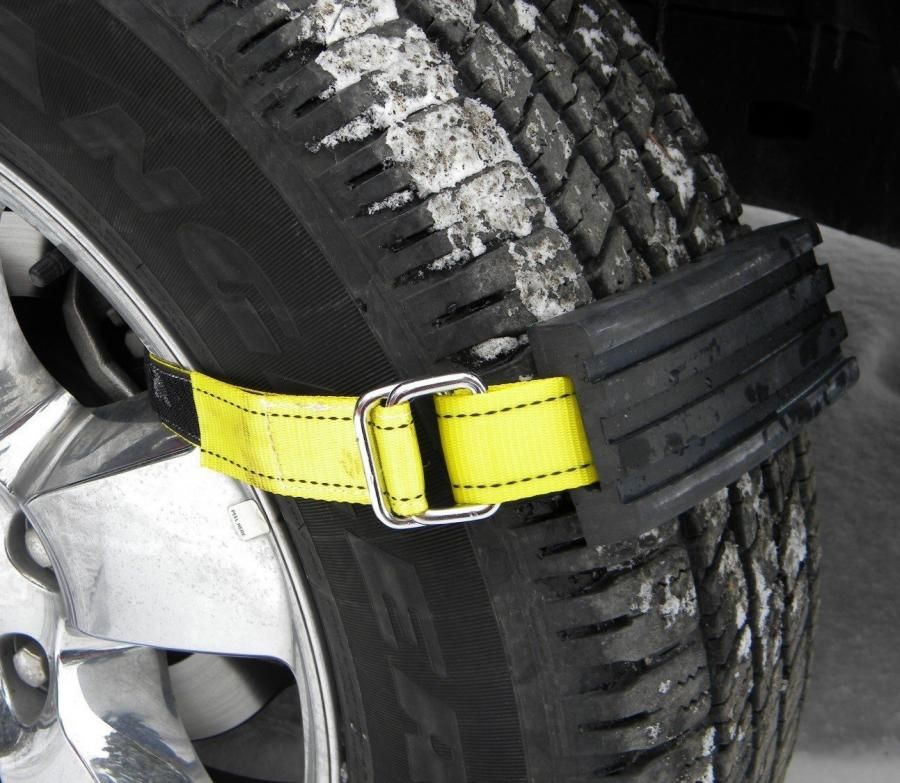 It will sound bumpy and will cause vibration. This sound is created by the uneven interaction of the tire with the surface of the road. Because when the tire belt is broken, it will make the tire surface bumpy.
It will sound bumpy and will cause vibration. This sound is created by the uneven interaction of the tire with the surface of the road. Because when the tire belt is broken, it will make the tire surface bumpy.
When the bumpy parts hit the surface of the road, it will create these types of noises and vibrations.
Take AwayA tire belt protects and provides strength for the tread. So, the tire needs to have a flawless tire belt. Even if you have a fully functional tire belt, it can get damaged for the above-mentioned reasons and cause an unwanted and severe accident.
Coming to that, it is clear that if there is anything wrong with your tire belt it will damage the wheel as well as other major components of the vehicle. So, it is obvious that as soon as you find that your tire belt is broken, you should fix it immediately without driving much further.
0 shares
Home » Accessories » Tires » [Detailed] How Long Can You Drive On A Broken Tire Belt?
Advertisements
Broken Belt in Tire SignsIf you are driving and you have noisy tires, this could be a sign that you have a broken belt aka a tire separation. A broken belt in tire could cause your car to vibrate or your steering wheel to shake. Your tires may even seem like they’re bouncing in extreme cases. All of these can be signs that you have a broken belt/tire separation in your tire.
A broken belt in tire could cause your car to vibrate or your steering wheel to shake. Your tires may even seem like they’re bouncing in extreme cases. All of these can be signs that you have a broken belt/tire separation in your tire.
Fix The Problem
Your tire may even appear to have an odd shape. This odd shape could look like a big and long bubble inside your tread. In really bad cases your steering wheel could jerk back and forth while your car is bouncing. In some extreme cases it may feel like your tire isn’t even a circle anymore.
A tire is like God’s love for you… endless.
Tweet
You can get vibrations, steering wheel shaking, bouncing at low speeds, and at high speeds if you have a broken belt in tire. If you have any of these symptoms you should look for new tires as soon as possible. This is a dangerous form of tire damage that can lead to a potential tire blowout.
Let’s be safe on the road, so be sure to fully inspect your tires before you drive on the road. Tires are a safety tool so let’s be smart when it comes to our tires.
Tires are a safety tool so let’s be smart when it comes to our tires.
Advertisements
Tire Belt SeparationSteering Wheel Shakes at High/Low Speeds?Why does my steering wheel shake at high/low speeds?
Bad tire separation/broken belt in tire could be the culprit behind your shaking steering wheel. This form of tire damage can affect your vehicle when traveling at high or low speeds.
Tire separation is when the tread of your tire separates from the internal structure of your tire. This causes a bump in your tires tread or a very oddly shaped tire. This damage can sometimes be rather severe, causing your car to feel like it’s falling apart when you drive.
When these things happens to your tire, it is no longer any good. You can always replace your bad tire with your spare tire just until you get a new one.
You should NOT drive with a broken belt in your tire. Your tire(s) could potentially have a catastrophic failure such as a tire blowout, flat tire, or tire explosion. If you’re not in the market for a new tire and you don’t have a spare, I would park your car until you get a new tire.
Your tire(s) could potentially have a catastrophic failure such as a tire blowout, flat tire, or tire explosion. If you’re not in the market for a new tire and you don’t have a spare, I would park your car until you get a new tire.
Be sure to always inspect your tires, feel and listen for any signs of a bad tire, you might just save yourself from having a really bad day.
Please note, your steering wheel can shake for other reasons such as a tire out of balance, cupping, out of round tire, suspension issues, alignment issues or could be a brake problem and it shakes when you apply the brakes.
Tire Valve Caps (American Flag)
The Subdued American Flag tire valve stem covers are made from machined aluminum in black and treated to withstand the elements, specifically for outdoor use. Each valve cap contains a rubber O-ring for an air tight seal to prevent dust dirt and debris from entering.
Buy Now
Loud Tire Noise at Highway SpeedsAre your tires really loud and noisy when traveling at high speeds? This could very well be a sign that your tires are starting to separate.
Tire separation is when the inside structure of your tire starts to separate from the outer tread. This will cause your tire to be out of shape or have a rather large bubble on the tread itself.
Bad tire separation could very well cause this noise. For steel belted tires, tire separation is very common. Having a tire separation is not safe at all. This tire damage needs to be addressed immediately.
Take action before matters get worse.
Tweet
The only way to eliminate tire separation is to buy a new tire. If this problem worsens and your tire separates more, you could have your tires start to shake your car or even bounce it.
Be safe, address this situation and buy new tires. You don’t want to leave yourself stranded on the side of the road due to a tire malfunction or tire blowout. By getting new tires you are not only protecting yourself, but others around you.
What Causes Broken Belt in Tire?There are many reasons why your tires could have bad tire separation/a broken belt.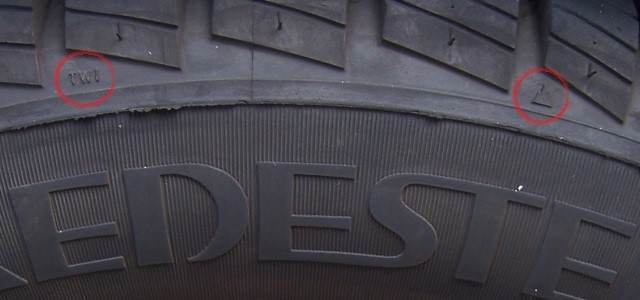 These reasons include a tire defect, not taking good care of your tires/abuse of your tires, incorrect PSI levels, repairing your tire the wrong way, and/or bad tire wear. Please understand once you have a broken belt or tire separation in your tire there is no going back you need a new tire.
These reasons include a tire defect, not taking good care of your tires/abuse of your tires, incorrect PSI levels, repairing your tire the wrong way, and/or bad tire wear. Please understand once you have a broken belt or tire separation in your tire there is no going back you need a new tire.
If this problem is not addressed more than likely this problem will get worse and end with you stranded on the side of the road. Be sure to inspect your tires and feel your tires to make sure they are always in perfect working order. If you feel or see a big bump or bulge on your tread, then you have a tire separation.
Having a defective tire is highly dangerous and is actually more common than you would think. Having a tire defect means that in the process of making your tire something went wrong.
What happens is the tire steel belt and the tread did not seal well to the tire casing. When this happens, something went wrong with the chemical procedure when it comes to forming the tire.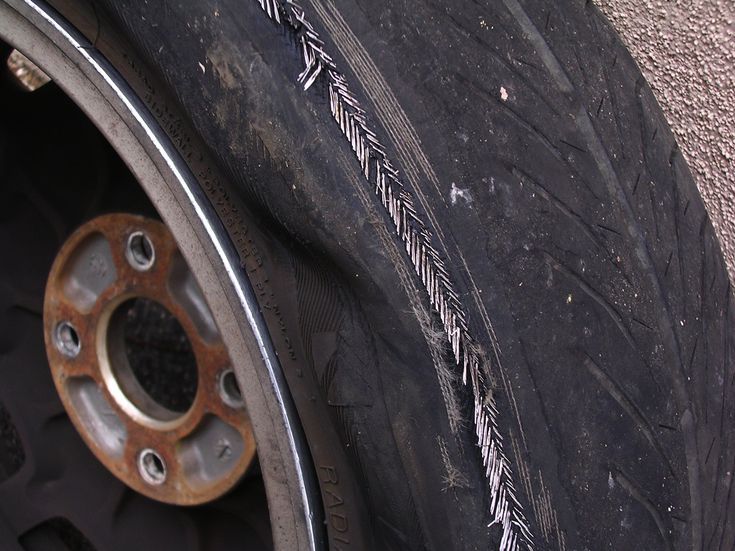
This is a factory defect and you should see if there are any recalls or compensation you can receive. Check with the place you got the tire from for a workmanship and materials warranty.
Riding with too much air in your tires or driving over things you shouldn’t be driving over can cause a broken belt in tire. Both over inflation and riding over rough areas can be an equation for the destruction of your tires.
Your tires are designed to absorb the impact when it comes to going over bumps and potholes. When your tires are overinflated, your tires will be rigid and will not be able to absorb the shock when driving over rough services. This high impact can cause a broken belt/ tire separation.
Be sure to check the inside of your driver door to see what PSI your car calls for on the door sticker. Then air your tires with a portable tire inflator or at a gas station air pump. Riding with too much air pressure in your tires can cause a whole bunch of heat and tire wear.
Not repairing your tire the right way can cause your tire to separate as well. Sometimes putting a plug or a patch plug in your tire will cause tire separation. Be sure you know how to repair a tire the right way for your own safety.
Once you get a separated belt within your tire, you have to replace your tire. So, be sure to repair your tire correctly.
Another cause of a broken belt or tire separation is having bad tire wear. Your tires have a mileage clock and once your tires have been road on for the amount of miles you were supposed to get out of them, you should replace them.
Be sure to check your tread depth with a tire tread check tool. Having bald tires is very dangerous. You could have a loss of traction or a tire failure because of it. Bald tires can cause a tire separation/ broken belt. When your tires are bald there is less tread to protect the innards of your tire.
Tire Tread Depth Gauges (2 Pack)
This tire tread depth gauge tool reads in 32nds. Suitable for trucks, motorcycles, automobiles and any passenger vehicle. Know exactly when to get new tires!
Suitable for trucks, motorcycles, automobiles and any passenger vehicle. Know exactly when to get new tires!
Buy Now
When hitting a bump or pothole with bald tires there is less tread to help absorb the impact. Old and worn out tires are also just more prone to having more problems. You should always replace your tires in a timely manner. Your tires keep you on the road, so be sure to take care of them to help insure your safety.
How Long can You Drive on a Separated Tire?Is it safe to drive on a separated tire? How long do you have until your tires are toast?
The answer is easy: you should never drive on a separated tire. You are asking for a disaster if you do drive on a separated tire. The problem is your tire is literally coming apart from the inside out, and there is no telling when you will have a tire blowout.
Plan ahead. Don’t set yourself up for failure.
Tweet
For your own safety, tire(s) should be replaced as soon as possible. It’s not only dangerous for you to drive on a separated tire but for those traveling with you and the cars on the road around you as well. Plus, if your tire blows out while you are driving, you could damage the rim and possibly cause a wreck.
It’s not only dangerous for you to drive on a separated tire but for those traveling with you and the cars on the road around you as well. Plus, if your tire blows out while you are driving, you could damage the rim and possibly cause a wreck.
A tire separation is literally when the inside of your tire detaches from the tread of your tire. This causes a bubble on your tread.
As stated before a broken belt in tire is most common on factory defected tires or on cheap tires. Be sure to be safe when it comes to your tires. It’s always good practice to visually inspect your tires as well as feeling them for anything wrong.
Can You Fix a Broken Belt in Tire?Can tire separation be fixed? Yes. You just have to buy a new set of tires. Unfortunately, once the tire is separated, fixing it is impossible. This damage deems your tire very unsafe to drive on.
Tire separation can cause a rough ride such as road noise, jerking in the steering wheel, car vibration and shaking. This means the structure of your tire is falling apart which holds your tread to the inner part of your tire.
This means the structure of your tire is falling apart which holds your tread to the inner part of your tire.
This will form a lump on your tread or just cause your tire to be very oddly shaped. You could have a bumpy ride, vibrations, steering wheel shakes, or your vehicle might even feel like it’s jumping.
Don’t risk having a tire pop or a flat tire. Replace your tires or you might be stuck on the side of the road installing your spare tire. Tire separation is a serious problem that needs to be addressed. Point is you can not fix tire separation and be sure to also look over your tires well to keep the roads safe.
Broken Belt in Tire SymptomsWhen you have a tire separation there are many tell tale signs when it comes to figuring out what is wrong with your tire(s). Please understand, that if you have a tire separation you need new tires as soon as possible. You are at risk of having a tire blow out.
Riding down the road you may experience a loud noise from your tires maybe even in the form of a rumbling noise. This rumbling noise probably comes from a lump or an out of shape tire due to tire separation. Your whole entire car may vibrate or shake because of these lumps or bumps.
This rumbling noise probably comes from a lump or an out of shape tire due to tire separation. Your whole entire car may vibrate or shake because of these lumps or bumps.
When going down the road your steering wheel could have vibrations or shake because of tire separation. In a more extreme situation of tire separation your steering wheel could jerk left and right, your car may bounce or your car will ride like it’s going over a bunch of bumps.
If you are experiencing any of these symptoms you should consider getting new tires for your safety. A tire with tire separation is not safe to ride on, your tire will be more prone to popping due to a broken belt in tire.
 Is it possible to go?
Is it possible to go? Yuri [omnomnyasha]
11/01/2017, Views: 44858
In everyday driving, drivers begin to forget things like checking oil, antifreeze and belts. The result is constant breakdowns. If we talk about belts, they are simply torn.
What is the function of the alternator belt?
The newer the car, the more different electronics it contains. In older cars, the only electrical equipment was the ignition system and lighting. Now almost all elements and accessories in the car consume electricity. The biggest consumers are air conditioning, on-board computer, radio, alarm. If many accessories are turned on, then the load on the network increases and more energy is consumed. They are all powered by a battery and a generator that restores the battery charge. The generator is driven from the crankshaft using a belt.
Why does the belt break?
As practice shows, the belt breaks only due to heavy wear. During the operation of the motor, the belt is under heavy load. Despite the modern technology of manufacturing an accessory, cracks and scuffs may appear on it. Also, very often the edges are frayed and the teeth are erased.
During the operation of the motor, the belt is under heavy load. Despite the modern technology of manufacturing an accessory, cracks and scuffs may appear on it. Also, very often the edges are frayed and the teeth are erased.
If it so happened that you looked under the hood to check the condition of the belts and found at least one of the signs there, then it is worth considering replacing the belt. Soon he will make himself known. If something is wrong with the belt, it can "whistle". Also, a characteristic screech can be heard in wet weather. Sometimes the whistle disappears, but this only means that the tension has loosened. You can tighten the belt harder, but it's not worth it. Better to replace. Replacing the alternator belt yourself is not a difficult task. But you can also contact the station.
If the belt breaks, don't panic. There is nothing critical in this. It’s just that now, while driving, the battery will not receive a charge, and all the included systems will simply “eat up” its energy.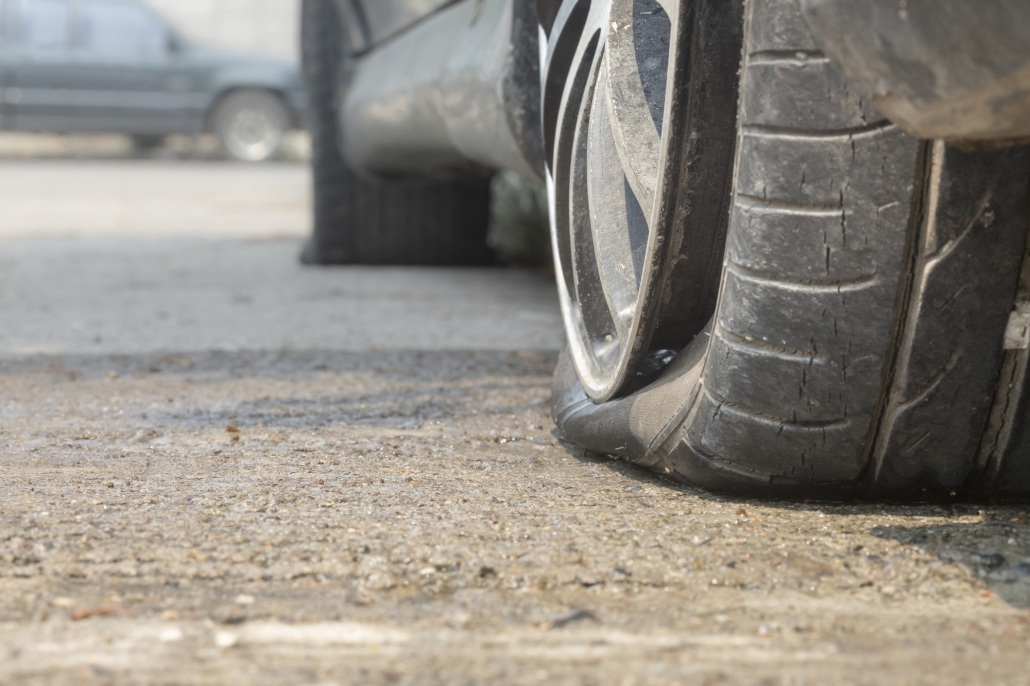
What to do in such a situation?
If a spare belt is not available, then drastic measures can be taken. It is necessary to loosen the tensioner and install something else in place of the belt. For example:
It is important that the replacement item is durable. If necessary, then you can fold the material in half. But it is worth saying that this is a RADICAL MEASURE. You can't keep moving like that.
The installation of the replacement belt is finished, now it is necessary to tighten it. For this there is a special tensioner. We take the generator as far as possible from the cylinder block. Next, use the wrenches to tighten the nuts. Now you need to measure the amount of deflection. Should be no more than a centimeter.
This is where our inventions end. You can move out. To the nearest service station should be enough.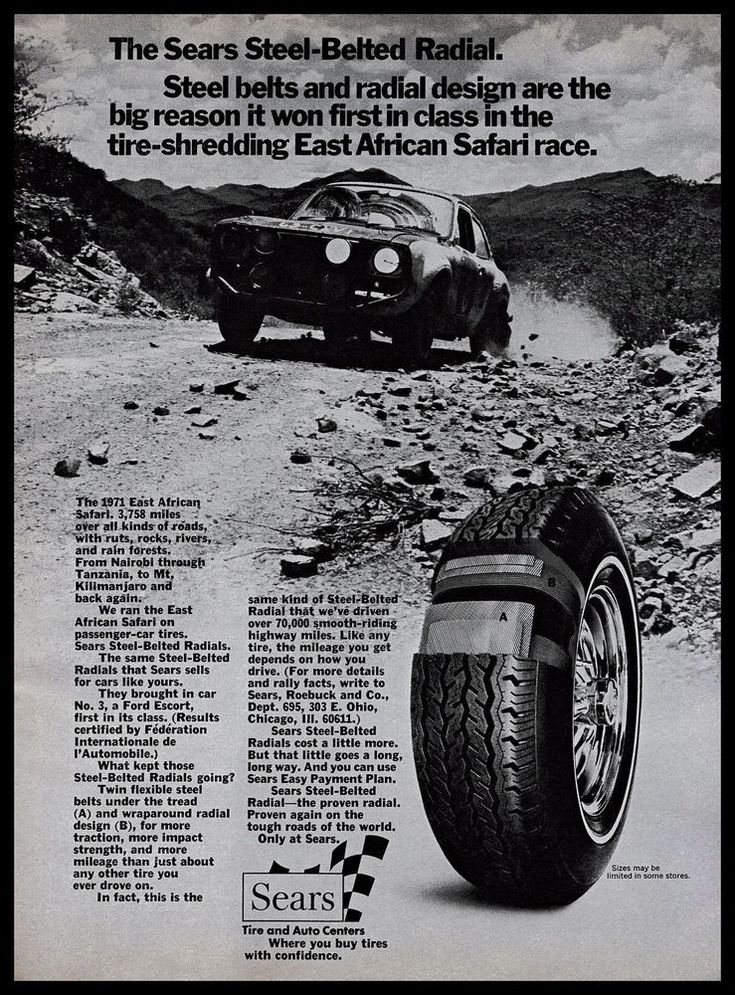 This design has been saving car owners in trouble for more than a decade.
This design has been saving car owners in trouble for more than a decade.
Can I move on if the belt breaks?
If a belt breaks on the road, this does not mean that you need to stop and panic. You can drive, but you won't get far. The car will run until the battery dies. Therefore, it is important to immediately go to the nearest service station for repairs.
What should I do to get to the station without a belt?
It is imperative to turn off all energy consumers: radio, stove, climate control, air conditioning and everything else. If there is a need, then it is better not to turn off the car, because there is an additional load on the battery.
What are the consequences of driving without an alternator belt?
Frankly speaking, nothing bad will happen. The engine and everything else will be intact. There is only one caveat - you will completely discharge the battery. In some vehicles, the alternator belt also drives the power steering pump. Therefore, when the belt breaks, the power steering stops working. This must be remembered when driving through turns and intersections. Whatever it was, the best solution is to immediately replace the belt with a spare one.
Therefore, when the belt breaks, the power steering stops working. This must be remembered when driving through turns and intersections. Whatever it was, the best solution is to immediately replace the belt with a spare one.
It is not easy to say exactly how long a car can travel on battery power alone. Factors such as the brand of car, battery capacity and battery charge level play. If time is running out, it is better to go to the nearest place where you can buy a belt. Many car enthusiasts will agree with me that in this case, the old belt should always be in the trunk. That is, after replacing it, it is better to throw it into the trunk. By installing such a belt, you can drive much further than on an elastic band from panties. You only need to install a belt that is suitable for the factory parameters. If the spare part is too long, then it will not work properly, and it will begin to slip in the grooves of the pulleys.
Related materials
What malfunctions can you drive with and what not?
On a weekday winter day, in the center of traffic jam Moscow, we decided to check the "survivability" of a car with a broken auxiliary drive belt. Oddly enough, but in the middle of a metropolis in such a situation, you can pretty much get upset. The traffic is so dense that neither towing nor the quick arrival of a tow truck can be hoped for. Rather, you will be fined for stopping in the wrong place. The diametrically opposite option is when "steppe and steppe are all around" and you need to get to people in order to get help.
Oddly enough, but in the middle of a metropolis in such a situation, you can pretty much get upset. The traffic is so dense that neither towing nor the quick arrival of a tow truck can be hoped for. Rather, you will be fined for stopping in the wrong place. The diametrically opposite option is when "steppe and steppe are all around" and you need to get to people in order to get help.
In our car - Lada Largus - if the belt breaks, the generator, power steering and air conditioning compressor will stop working. Air conditioning in winter is not very relevant. The absence of a hydraulic booster will remind us of power steering techniques, and a non-rotating generator will not recharge the battery, limiting our experiment in time.
Before starting the experiment, we check how the steering wheel rotates on a working car.
On wet pavement, standard-size studded winter tires can be turned on the spot with the help of a power steering by applying a force of no more than 1. 5 kg to the steering wheel.
5 kg to the steering wheel.
On wet pavement, standard-size studded winter tires can be turned on the spot with the help of a power steering, applying a force of no more than 1.5 kg to the “steering wheel”.
Now remove the accessory drive belt. To do this, I had to remove the right front wheel and plastic mudguard.
| Break - do not, and ... Break - do not do, and ... | ... the belt was eventually removed. … the belt is finally removed. |
We start the engine and immediately see an alarm indicator lamp with a battery symbol, which indicates a lack of charge. We note the time of the beginning of the experiment. We quickly determine the force required to turn the front wheels.
The force exceeds 10 kg.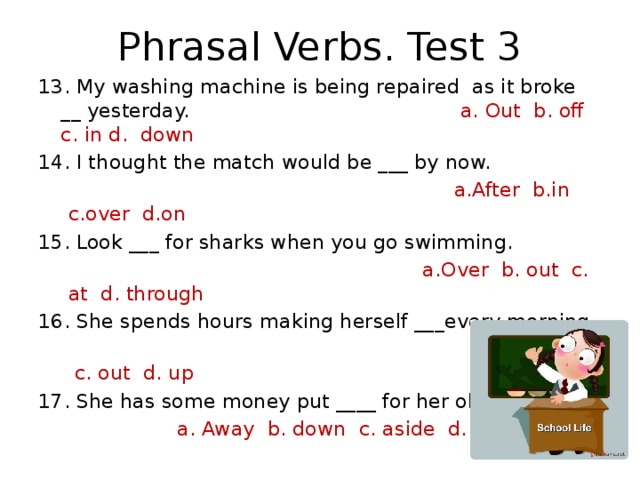 It won't be easy on the road.
It won't be easy on the road.
The force exceeds 10 kg. It won't be easy on the road.
On vehicles with power steering, when there is no fluid supply from the pump, the force is quite large. The amplifier not only does not help, but even hinders. This is due to the fact that the fluid in the steering rack has to be transferred from one volume to another, using the only source of energy - muscle strength! In this sense, a failed electric power steering "loads" the driver less.
It's time to go to natural tests around the city.
In this mode, consumers of electrical energy should be turned on as little as possible. After all, in a modern car, the fuel pump, engine management system and ignition system are constantly working. The brake lights come on intermittently and the direction indicators turn on. All this drains the battery.
Nevertheless, we did not violate traffic rules and turned on the dipped beam.
Nevertheless, we did not violate the traffic rules and turned on the low beam.
Immediately after this, the current consumed by all the switched on electrical equipment of the car was determined. It is in the range of 21-22 A.
Related materials
Sugar in a gas tank - checking auto legends
The rigorous testing hours have passed. Traffic in traffic jams is jerky, with short dashes. The average speed is 12 km/h. And it is not easy to turn the steering wheel in turns.
Well, for now, let's talk about how long it will take us to test. There is a concept of "reserve battery capacity". This value just characterizes how long the battery will last at a current consumption of 25 A. So, for batteries with a capacity of about 60 Ah, this time is approximately 100–120 minutes. But this is for a fully charged battery in laboratory conditions. In our experiment, a battery that has served for 1 year and is charged by a regular car generator during daily relatively short trips of 10-12 km (twice a day) in Moscow is involved in the experiment.
The voltmeter connected to the car's on-board network shows a gradual decrease in voltage, but the car is still moving quite normally. And only when the voltage dropped below 7.8 V did interesting things begin...
The engine speed began to jump and the airbag and anti-lock braking system warning lights came on.
A few seconds later, the engine stalled.
After a few seconds, the engine stalled.
The experiment ended after two hours of continuous movement. During this time, the car drove 24 km. That is, with a decent battery, even from the center of a cork city, you can get to the outskirts. And on an unloaded track with good average speeds, you can overcome 100-150 km. After all, the consumption of electricity by a car almost does not grow with an increase in speed. Our experiment showed that it is possible to get to the place of repair without an auxiliary drive belt.
| The car stopped in the most unfortunate place. The car stopped in the most unfortunate place. | The battery was replaced with a freshly charged one within a few minutes, after which the vehicle returned to the base. The battery was replaced with a freshly charged one within a few minutes, after which the vehicle returned to the base. |
However, there are exceptions among them: sometimes there are motors in which the timing drive is belt driven, but the pump is rotated by the belt of auxiliary units. In this case, and also when the chain rotates the camshafts, the trick we have described will not work. The pump will not pump coolant. With such a malfunction in a modern car, you can only drive to the side of the road. Prolonged driving will inevitably lead to engine overheating.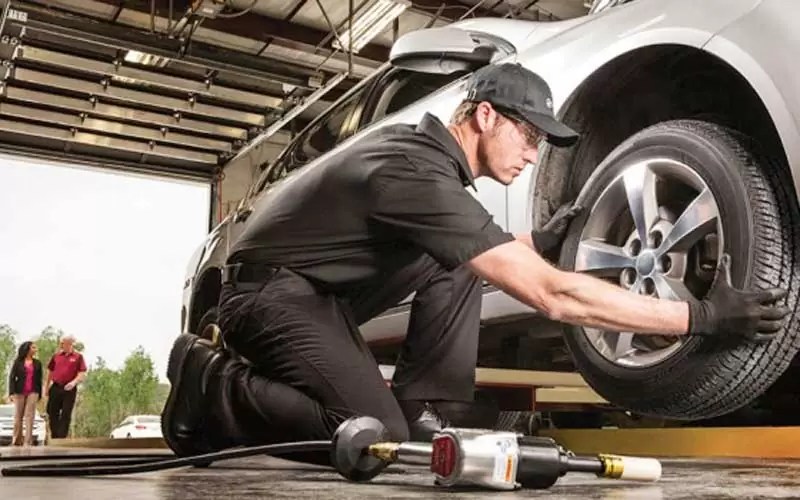
Tell us in the comments if you had to get to your house or repair place with a broken belt?
Broken alternator belt - how far will we go without it? Experiment ЗР
Broken alternator belt - how far will we go without it? Experiment ЗР
Alternator belt break - how far will we go without it? Experiment ZR
Broken alternator belt - how far will we go without it? Experiment ЗР
Our new video
Volga GAZ-22: test of the rarest station wagon of the USSR
"Anti-crisis" UAZ Patriot: what was removed, what was left, what is the price?
Crossovers for 2 million: what to take instead of Creta and Duster
Did you like the note? Subscribe and you will always be in the know!
Driving on Yandex.